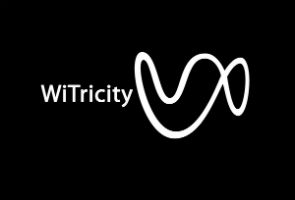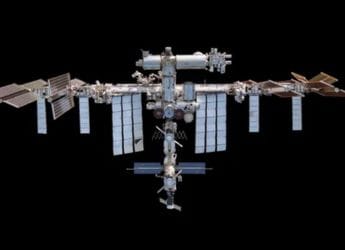- Home
- Others
- Others News
- Wireless charging, from a distance
Wireless charging, from a distance
By Anne Eisenberg, New York Times | Updated: 5 June 2012 00:54 IST

Click Here to Add Gadgets360 As A Trusted Source

Advertisement
Think how convenient it would be if you could recharge electronic devices without ever having to plug them in - or even take them out of your briefcase.
Instead, you could leave your briefcase, tote bag or backpack on a counter in the living room at home, and the smartphones and tablets within could see to their own recharging. And the robotic vacuum cleaner in the corner of the room could do likewise.
The WiTricity Corporation in Watertown, Mass., has developed a novel technology to handle just these sorts of wireless energy transfers. The company makes and licenses a system of magnetic coils and companion electronics that turn wireless charging into a built-in function of smartphones and other devices.
Eric Giler, the C.E.O., said consumer electronics using systems from WiTricity, which is short for wireless electricity, would appear this year. The systems will not be sold directly to consumers, but to equipment manufacturers who will embed the magnetic coils in phones, laptops and other products and systems.
WiTricity has signed a technology transfer and licensing agreement with MediaTek, a semiconductor company in Taiwan, to collaborate on systems for wireless charging of mobile handsets, tablet computers, game controllers and other devices, Mr. Giler said.
WiTricity is also developing technology for wireless charging of electric vehicles and, later, for use in implanted medical devices like heart pumps, said Katie Hall, its chief technology officer.
The technology is based on magnetic induction - the process used to recharge electric toothbrushes. In the toothbrush, the base has a magnetic coil that generates a magnetic field. A second coil in the toothbrush captures some of that field, inducing an electric current.
But electric toothbrushes transfer power only from the primary coil to the secondary one at very close range. Move the brush a short distance from the base, and it won't charge.
WiTricity extends the range of induction, wirelessly charging objects that are three or four feet away - sometimes farther - from the primary source of electricity, Mr. Giler said.
"This is a better form of induction," said Jason W. Fleischer, an associate professor of electrical engineering at Princeton who is familiar with the technology. Professor Fleischer, whose research is in electromagnetics and optics, has no financial connection to the company.
"Direct contact of a device to the counter isn't necessary," he said, "And you don't have to place your phone or tablet with a specific orientation on the counter for them to recharge."
Using the same technology, a homeowner could plug a WiTricity coil into an outlet in the living room. Then the robotic vacuum cleaner a few feet away, also equipped with an embedded coil, could recharge itself wirelessly.
WiTricity's technology was developed by Marin Soljacic, a physics professor at the Massachusetts Institute of Technology, and colleagues. It was reported in the journal Science in 2007, the year the company was founded. Dr. Soljacic, who received a $500,000 MacArthur award in 2008, serves on the board of WiTricity as it commercializes the system.
He extended the reach of induction by fine-tuning the design of the magnetic coils that generate oscillating magnetic fields.
Professor Fleischer said that "the magic is in the tuning." The magnetic coil that plugs into an outlet is engineered so it resonates at the same frequency as the companion coil embedded in the smartphone or other device. The devices join in a continuous magnetic field, and enough resonance results to induce an electrical charge for needy batteries.
WiTricity's technology is timely, said A. Douglas Stone, chairman of the Department of Applied Physics at Yale, and not only for the billions of people who use personal electronic devices
Electric cars might be more appealing to some consumers if they could be charged wirelessly, rather than by attaching cables. And, soon, the technology could benefit rechargeable electronic medical implants, like pacemakers and neurostimulation systems for pain management.
For all these products, Dr. Stone said, induction that works at distances of a meter or two - about three to six feet - might be useful. "The difference in what you can do when you charge at a very short range - essentially contact - and when you can do it at a meter or two, is huge," he said.
Instead, you could leave your briefcase, tote bag or backpack on a counter in the living room at home, and the smartphones and tablets within could see to their own recharging. And the robotic vacuum cleaner in the corner of the room could do likewise.
The WiTricity Corporation in Watertown, Mass., has developed a novel technology to handle just these sorts of wireless energy transfers. The company makes and licenses a system of magnetic coils and companion electronics that turn wireless charging into a built-in function of smartphones and other devices.
Eric Giler, the C.E.O., said consumer electronics using systems from WiTricity, which is short for wireless electricity, would appear this year. The systems will not be sold directly to consumers, but to equipment manufacturers who will embed the magnetic coils in phones, laptops and other products and systems.
WiTricity has signed a technology transfer and licensing agreement with MediaTek, a semiconductor company in Taiwan, to collaborate on systems for wireless charging of mobile handsets, tablet computers, game controllers and other devices, Mr. Giler said.
WiTricity is also developing technology for wireless charging of electric vehicles and, later, for use in implanted medical devices like heart pumps, said Katie Hall, its chief technology officer.
The technology is based on magnetic induction - the process used to recharge electric toothbrushes. In the toothbrush, the base has a magnetic coil that generates a magnetic field. A second coil in the toothbrush captures some of that field, inducing an electric current.
But electric toothbrushes transfer power only from the primary coil to the secondary one at very close range. Move the brush a short distance from the base, and it won't charge.
WiTricity extends the range of induction, wirelessly charging objects that are three or four feet away - sometimes farther - from the primary source of electricity, Mr. Giler said.
"This is a better form of induction," said Jason W. Fleischer, an associate professor of electrical engineering at Princeton who is familiar with the technology. Professor Fleischer, whose research is in electromagnetics and optics, has no financial connection to the company.
"Direct contact of a device to the counter isn't necessary," he said, "And you don't have to place your phone or tablet with a specific orientation on the counter for them to recharge."
Using the same technology, a homeowner could plug a WiTricity coil into an outlet in the living room. Then the robotic vacuum cleaner a few feet away, also equipped with an embedded coil, could recharge itself wirelessly.
WiTricity's technology was developed by Marin Soljacic, a physics professor at the Massachusetts Institute of Technology, and colleagues. It was reported in the journal Science in 2007, the year the company was founded. Dr. Soljacic, who received a $500,000 MacArthur award in 2008, serves on the board of WiTricity as it commercializes the system.
He extended the reach of induction by fine-tuning the design of the magnetic coils that generate oscillating magnetic fields.
Professor Fleischer said that "the magic is in the tuning." The magnetic coil that plugs into an outlet is engineered so it resonates at the same frequency as the companion coil embedded in the smartphone or other device. The devices join in a continuous magnetic field, and enough resonance results to induce an electrical charge for needy batteries.
WiTricity's technology is timely, said A. Douglas Stone, chairman of the Department of Applied Physics at Yale, and not only for the billions of people who use personal electronic devices
Electric cars might be more appealing to some consumers if they could be charged wirelessly, rather than by attaching cables. And, soon, the technology could benefit rechargeable electronic medical implants, like pacemakers and neurostimulation systems for pain management.
For all these products, Dr. Stone said, induction that works at distances of a meter or two - about three to six feet - might be useful. "The difference in what you can do when you charge at a very short range - essentially contact - and when you can do it at a meter or two, is huge," he said.
Comments
Catch the latest from the Consumer Electronics Show on Gadgets 360, at our CES 2026 hub.
Related Stories
Popular on Gadgets
- Samsung Galaxy Unpacked 2025
- ChatGPT
- Redmi Note 14 Pro+
- iPhone 16
- Apple Vision Pro
- Oneplus 12
- OnePlus Nord CE 3 Lite 5G
- iPhone 13
- Xiaomi 14 Pro
- Oppo Find N3
- Tecno Spark Go (2023)
- Realme V30
- Best Phones Under 25000
- Samsung Galaxy S24 Series
- Cryptocurrency
- iQoo 12
- Samsung Galaxy S24 Ultra
- Giottus
- Samsung Galaxy Z Flip 5
- Apple 'Scary Fast'
- Housefull 5
- GoPro Hero 12 Black Review
- Invincible Season 2
- JioGlass
- HD Ready TV
- Laptop Under 50000
- Smartwatch Under 10000
- Latest Mobile Phones
- Compare Phones
Latest Gadgets
- Vivo Y500i
- OnePlus Turbo 6V
- OnePlus Turbo 6
- Itel Zeno 20 Max
- OPPO Reno 15 Pro Mini 5G
- Poco M8 Pro 5G
- Motorola Signature
- Vivo Y50e 5G
- Lenovo Yoga Slim 7x (2025)
- Lenovo Yoga Slim 7a
- Realme Pad 3
- OPPO Pad Air 5
- Xiaomi Watch 5
- Huawei Watch 10th Anniversary Edition
- Acerpure Nitro Z Series 100-inch QLED TV
- Samsung 43 Inch LED Ultra HD (4K) Smart TV (UA43UE81AFULXL)
- Asus ROG Ally
- Nintendo Switch Lite
- Haier 1.6 Ton 5 Star Inverter Split AC (HSU19G-MZAID5BN-INV)
- Haier 1.6 Ton 5 Star Inverter Split AC (HSU19G-MZAIM5BN-INV)
© Copyright Red Pixels Ventures Limited 2026. All rights reserved.

















